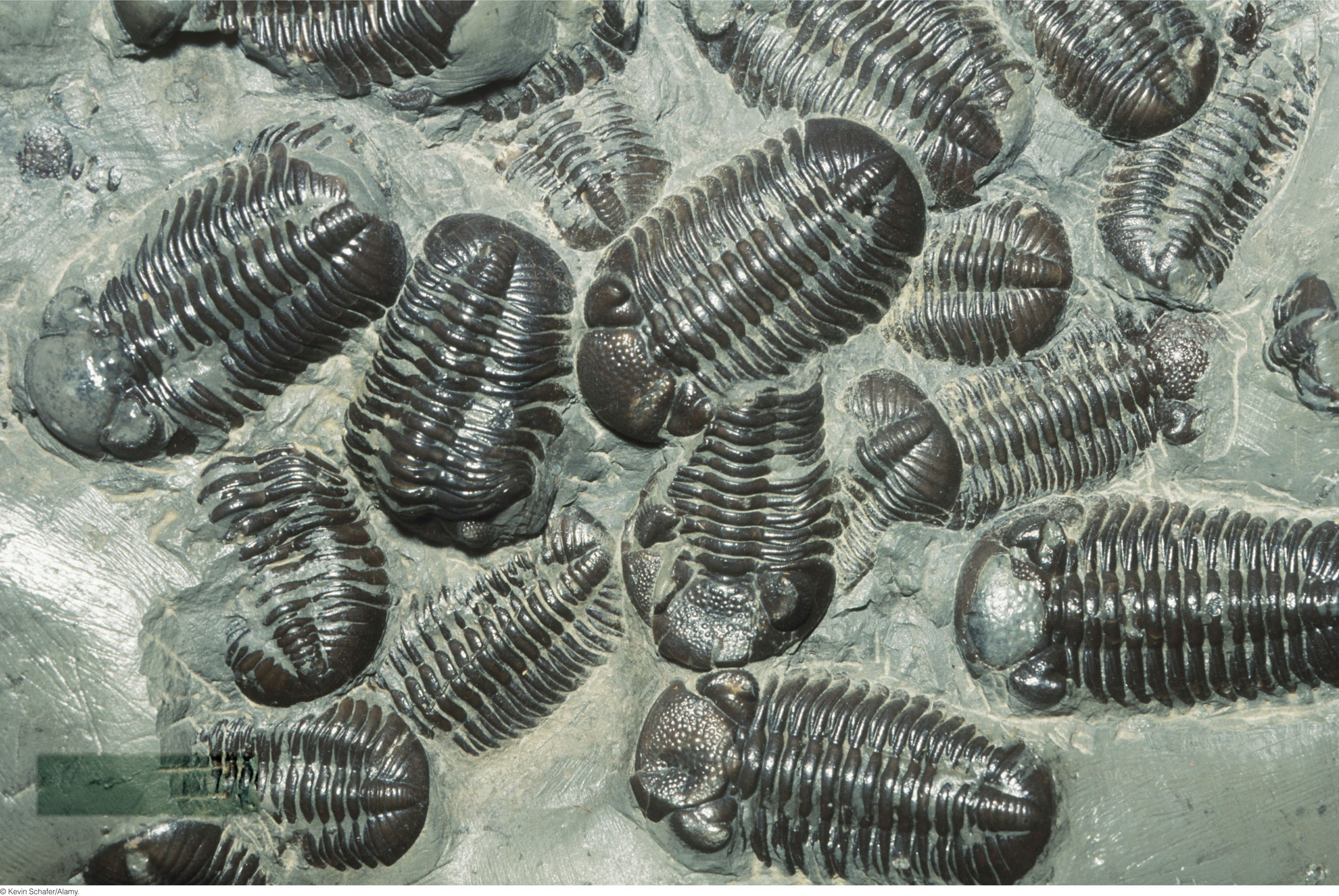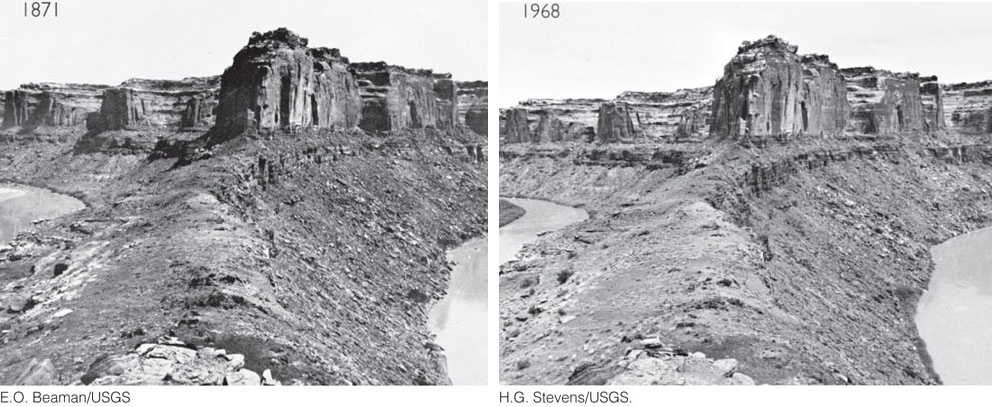194

CLOCKS IN ROCKS: TIMING THE GEOLOGIC RECORD
 Reconstructing Geologic History from the Stratigraphic Record 196
Reconstructing Geologic History from the Stratigraphic Record 196 The Geologic Time Scale: Relative Ages 202
The Geologic Time Scale: Relative Ages 202 Measuring Absolute Time with Isotopic Clocks 207
Measuring Absolute Time with Isotopic Clocks 207 The Geologic Time Scale: Absolute Ages 210
The Geologic Time Scale: Absolute Ages 210 Recent Advances in Timing the Earth System 212
Recent Advances in Timing the Earth System 212
195
PHILOSOPHERS HAVE STRUGGLED WITH the notion of time throughout human history, but until fairly recently, they had very little data to constrain their speculations. The immensity of time—”deep time” measured in billions of years—was a great geologic discovery that changed our thinking about how Earth operates as a system.
Pioneering geologists such as James Hutton and Charles Lyell led us to understand that the planet was not shaped by a series of catastrophic events over a mere few thousand years, as many people had believed. Rather, what we see today is the product of ordinary geologic processes operating over much longer time intervals. Hutton stated this understanding as the principle of uniformitarianism, described in Chapter 1. Knowledge of geologic time helped Charles Darwin formulate his theory of evolution, and it has led to many other insights about the workings of the Earth system, the solar system, and the universe as a whole.
Geologic processes occur on time scales that range from seconds (meteorite impacts, volcanic explosions, earthquakes) to tens of millions of years (the recycling of oceanic lithosphere) and even billions of years (the tectonic evolution of continents). If we are careful enough, we can measure the rates of short-term processes, such as beach erosion or seasonal variations in the transport of sediments by rivers, in a few years. Precise surveying can monitor the slow movements of glaciers (meters per year), and with the Global Positioning System, we can track the even slower movements of the lithospheric plates (centimeters per year). Historical documents can provide certain types of geologic data, such as the dates of major earthquakes or volcanic eruptions, from hundreds or, in some cases, thousands of years ago.
196
However, the record of human observation is far too short for the study of many slow geologic processes (Figure 8.1). In fact, it’s not even long enough to capture some types of rapid but infrequent events; for example, we have never witnessed a meteorite impact as big as the one that left the crater shown in Figure 1.7. We must rely instead on the geologic record: the information preserved in rocks that have survived erosion and subduction. Almost all oceanic crust older than 200 million years has been subducted back into the mantle, so most of Earth’s history is documented only in the older rocks of the continents. Geologists can reconstruct subsidence from the record of sedimentation; uplift from the erosion of rock layers; and deformation from faults, folds, and metamorphic rocks. But to measure the pace of these processes and understand their common causes, we must be able to assign ages to events observed in the geologic record.

In this chapter, we will learn how geologists first plumbed the abyss of time by finding order in the geologic record. Then we will see how they used the discovery of radioactive “clocks in rocks” to develop a precise and detailed geologic time scale and to date the events that have occurred throughout Earth’s 4.56-billion-year history.